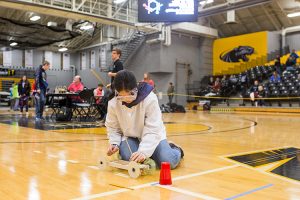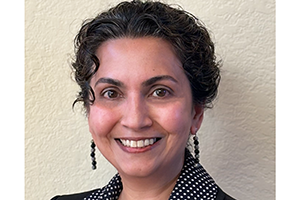Graham Stearns has already done a science project on gravitational waves with advice and support from UWM physics grad students.
“It seems like I’ve been interested in a science for a long time,” said the Shorewood Intermediate School eighth-grader. “It’s exciting to connect to people involved in Nobel Prize-winning research,” he added, referring to UWM physicists’ involvement in the LIGO (Laser Interferometer Gravitational-Wave Observatory) discovery of gravitational waves.
Stearns was among more than 1,500 young scientists in middle and high school taking part in the Wisconsin Science Olympiad at UWM April 6-7.
“This is my first time attending, and it’s been a blast,” said Cadi Zhang, a ninth-grader from Sheboygan North High School. “It’s so much fun.”
Preparing for the competitions and studying STEM subjects like physics and engineering has exposed her to science subjects she hadn’t really learned about previously, she added. “It is really empowering, especially for girls,” said Zhang, who hopes to study chemistry.
Students at the Olympiad visited labs, the Manfred Olson Planetarium, a greenhouse and other scientific facilities on campus, talked to university students about topics such as composite materials, and did some hands-on experimentation.
They also competed in a variety of events in areas such as sustainable energy, forensics, optics and potions and poisons. Some events involved building Rube-Goldberg-like contraptions to perform a certain task in as many complicated steps as possible in a set amount of time, or racing powered buggies or flying a miniature aircraft powered by a rubber band (middle-school level) or a small motor (high school level). Teams competed in more than 20 events in five major categories.
UWM faculty, staff and students joined parents, coaches and teachers from schools all over the state in helping out at the events and demonstrations.
“The events get young people exposed to science, and they learn how to work together in teams,” said volunteer Jim Carter of Menomonie. He should know — his son Geoff, who started with Science Olympiad in elementary school, is now a doctoral student in physics at Stanford.
“It is amazing to see all these talented students engage with scientific problems and construct innovative solutions,” said Anja Blecking, assistant professor of chemistry and biochemistry and head of the team organizing the UWM event. “Science Olympiad gives them the opportunity to experience a wide range of STEM activities and practice evidence-based strategies for problem solving.”








